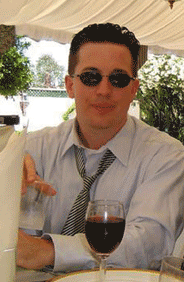John Netto is the president of One Shot -- One Kill Trading, Llc, and the author of the book One Shot -- One Kill Trading (McGraw-Hill). He is a principal in Triple Witch Metals Management, a hedge fund focused on the trading of precious metals, and he frequently contributes market insight through his blog, "Netto's Numbers." Netto is a nine-year US Marine Corps veteran who served throughout the Far East and speaks, reads, and writes Japanese and Mandarin. He can be heard regularly on Las Vegas-area radio to analyze sports handicapping and poker opportunities.Technical Analysis of STOCKS & COMMODITIES Editor Jayanthi Gopalakrishnan interviewed John Netto on May 2, 2007, via telephone.

John, how did you get interested in trading?
I have always been fascinated with money and risk, and with certain degrees of chaos. The first kind of risk adventure I went into was sports betting, when I was eight or nine, betting on football games. It was nothing substantial, but it always fascinated me.
Then when I was 11, I saw the movie Wall Street with Michael Douglas and Charlie Sheen. The lightbulb went on. I knew right then and there what I wanted to do. When I saw the excitement, the people screaming on the floor of the New York Stock Exchange, it just hooked me.
So then what happened?
I started researching. I subscribed to what is now Investor's Business Daily. I read The Wall Street Journal, studied options, read a book when I was 13 called Stock Market Logic, by Norm Fosback. Back then, I didn't understand what technicals were. I didn't understand what a moving average was, or what price action was.
The breakthrough for me came in 1997, my third year in the Marine Corps.
How did you end up in the Marines?
Well, to get there, you have to understand I ran a gambling operation in high school. I was a high school bookie. I ended up with a 1.7 grade-point average, and when I graduated it was time for me to make a change. So I joined the Marines and became, of all things, a weather forecaster. I went from trying to prognosticate one bit of randomness to another. I was stationed in Japan, and because I wanted to speak Japanese when I was over there, I studied it and ended up stationed at the US Embassy in Tokyo. I worked there for the State Department, and I had a lot of night watches, so I started following the US markets again at night. I opened up my first E*Trade account for trading and read as much as I could.
I was assigned back to the United States in 1998. A while after that, I happened to read a book titled Trading With DiNapoli Levels by Joe DiNapoli. That made all the difference.
Why did you find the book so influential?
It was his explanation of Fibonacci levels, as well as his methodology, that has served as the core for what I do to this day.
What did you do then?
I ended up with a daytrading firm, a group of traders in Seattle, while I was a student at the University of Washington, and then became the business editor at the student newspaper. I had my own section and started sending out newsletters, and that grew and grew. I ended up with a book deal from McGraw-Hill. Then I became more and more involved with the industry, and here I am today.
You manage money for others, don't you?
Yes. I am a principal of Triple Witch Metals Management, a commodity pool operator. We focus on the precious metals sector. The Standard & Poor's 500 and the NASDAQ showed tremendous range in 2001-02, making us look like geniuses. Then we didn't look so smart in 2003 and 2004.
Right now, the equity markets are mutual fund-friendly, conducive to buy & hold investors, but the currency markets -- the US dollar-euro, the US dollar-Swiss franc, and the US dollar-yen -- have a lot of energy in them. My trading personality embraces that range and that energy. My colleague and fellow principal in the fund, Jason Urquhart, and I are very bullish on the metals market and have been fortunate enough to benefit from that over the last couple of years. There have been some peaks and valleys along the way. Right now, it is a little more toward the peak, but the market has a way of humbling you.
...Continued in the July 2007 issue of Technical Analysis
of STOCKS & COMMODITIES
Excerpted from an article originally published in the July 2006 issue
of Technical Analysis of STOCKS & COMMODITIES magazine. All rights
reserved. © Copyright 2006, Technical Analysis, Inc.
Return to July 2007 Contents